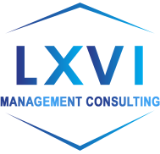
09 Feb Saudi Vision 2030: Progress and Challenges

Introduction
It is now nearly seven years since Saudi Crown Prince Mohammed bin Salman stepped out on stage in 2016 and announced Vision 2030, the most ambitious plan to transform Saudi Arabia’s economy and society since its foundation more than eighty years earlier. In early 2023, we are almost exactly halfway to the 2030 deadline. While Vision 2030 is a vast program, we’ll look at progress in three key areas – economics and energy, education and skills, and infrastructure, as well as some of the challenges encountered so far.
Economy and Energy
Vision 2030 makes clear that the green energy revolution is coming and the days of Saudi Arabia being carried along on a river of oil are numbered. Most importantly, the overwhelming role played by oil & gas in government revenue makes the energy transition a substantial risk to the Kingdom’s finances, and reducing this dependence is an especially pressing challenge. Hence, a key part of Vision 2030 is the diversification of government revenues away from oil. According to the International Monetary Fund (IMF), non-oil revenue for the Saudi government has risen from about 10% of GDP in 2016 to just over 20% in 2022, having increased by over 120% in US dollar terms. However, the increase has stagnated since the COVID pandemic. While this may be understandable, it does mean that the world will have to wait to see if the Saudi administration is able to resume growing non-oil government revenue faster than GDP in the years to come.
As a large country in the middle of the Arabian desert, it has always been clear that solar power will be one of the key aspects of any move away from hydrocarbons. Saudi Arabia has indeed seen a rapid increase in photovoltaic capacity in recent years, from 24 MW in 2016 to 439 MW in 2021, and the Kingdom is also continuing to expand concentrated solar power (CSP) capacity. However, even this very rapid expansion does appear to lag the ambitious targets the Saudis have set themselves.
Education and Skills
Developing a high-skill, dynamic and entrepreneurial workforce is a key part of Vision 2030. This seems to be a clear success in the Vision 2030 program, as the country ranked 9th in the UN Development Program’s Index of Technical and Vocational Training in 2021. Female labour force participation has risen rapidly from under 20% in 2016 to over 35% in 2021, and Saudi Arabia scored 80% on the World Bank’s Women, Business and Law Report 2022. This seems to have been accompanied by a large increase in entrepreneurship among Saudis, with almost 900,000 small businesses and startups registered in the five years to 2021, including in areas such as fintech and computer game design. It has also led to an increase in social engagement in the country, as the number of Saudis volunteering their time to work for non-profits and charities rose from 34,000 to 484,000 between 2016 and 2021, including over 380,000 health volunteers during the COVID pandemic.
Infrastructure
The centrepiece of the infrastructure pillar of Vision 2030 is NEOM, the futuristic linear city on the Gulf of Aqaba. While linear cities have been proposed by urban planners for over a century, they have never been attempted on this scale, and the scope of the project is unprecedented. It is difficult to objectively assess the progress on NEOM at this point, and it may be a few more years until we find out whether the Crown Prince’s vision for Saudi Arabia to host the archetypal 21st Century city will be fully realised. However, we can observe the progress that has been made on numerous smaller projects, from road building to housing, with the digital economy being a particular bright spot. The Kingdom scores highly for high-speed broadband and 5G penetration and ranked second in the G20 for digital competitiveness in 2021, according to the European Centre for Digital Competitiveness. The country also increased its homeownership rate from 47% to 60% in just five years after 2016.
Conclusion
While there are many other aspects of Vision 2030 that we have not covered here, trends thus far indicate that Vision 2030 has indeed had a transformational effect on the country. However, much of the progress made has been achieved via government spending and changes to regulation. Only time will tell if Saudi Arabia is able to effectively harness long-term economic trends in order to continue its early momentum and complete the more ambitious elements of its Vision.
